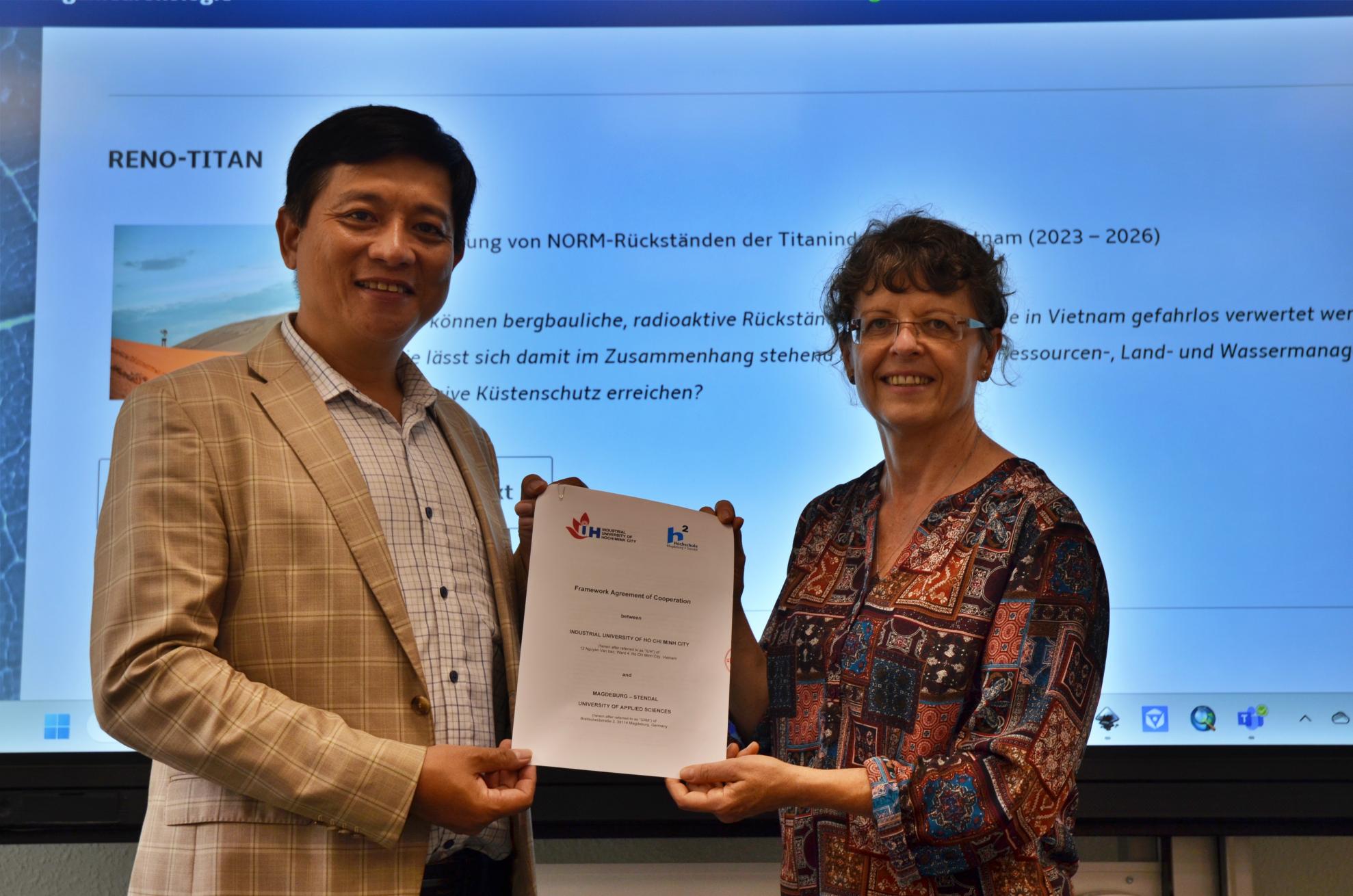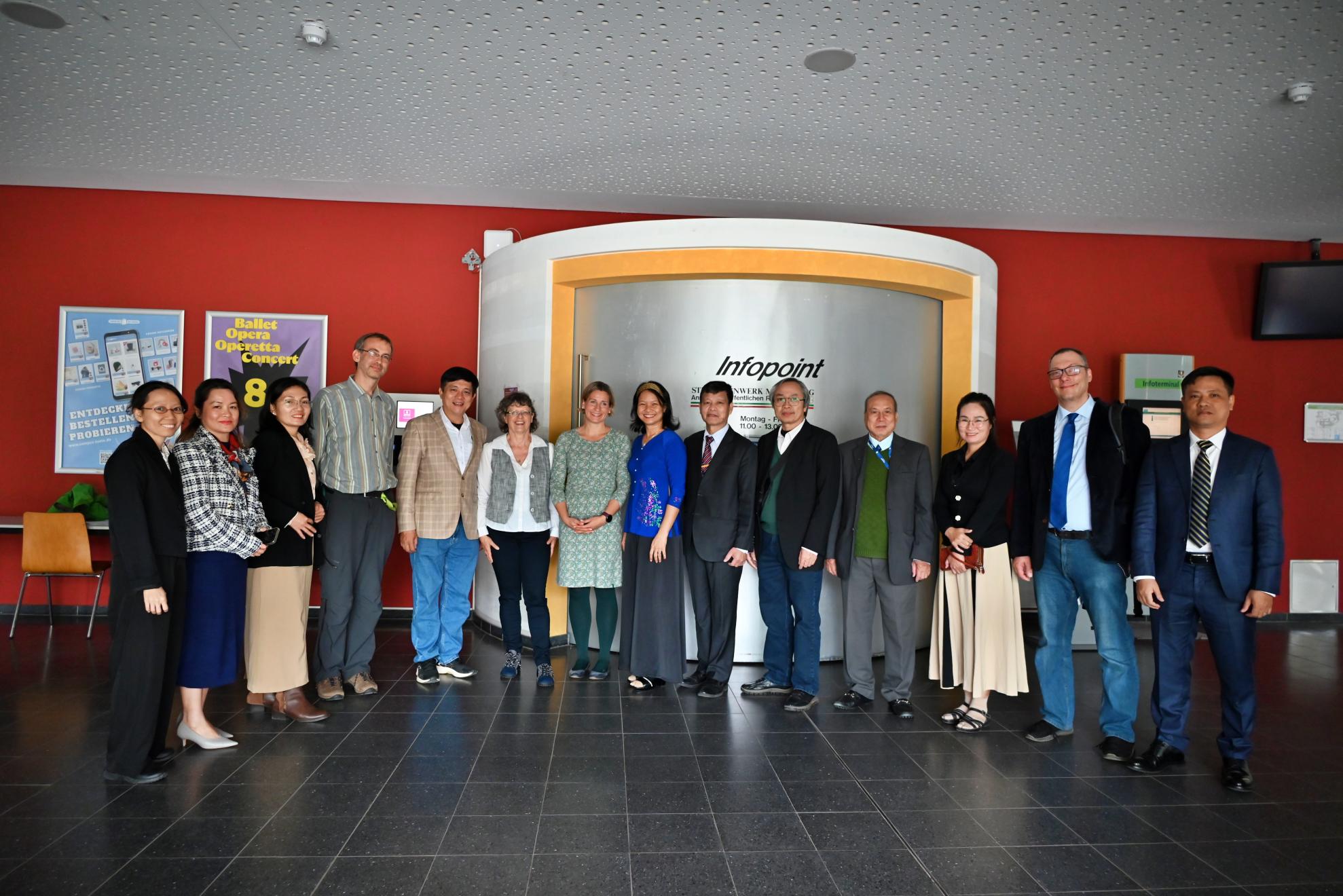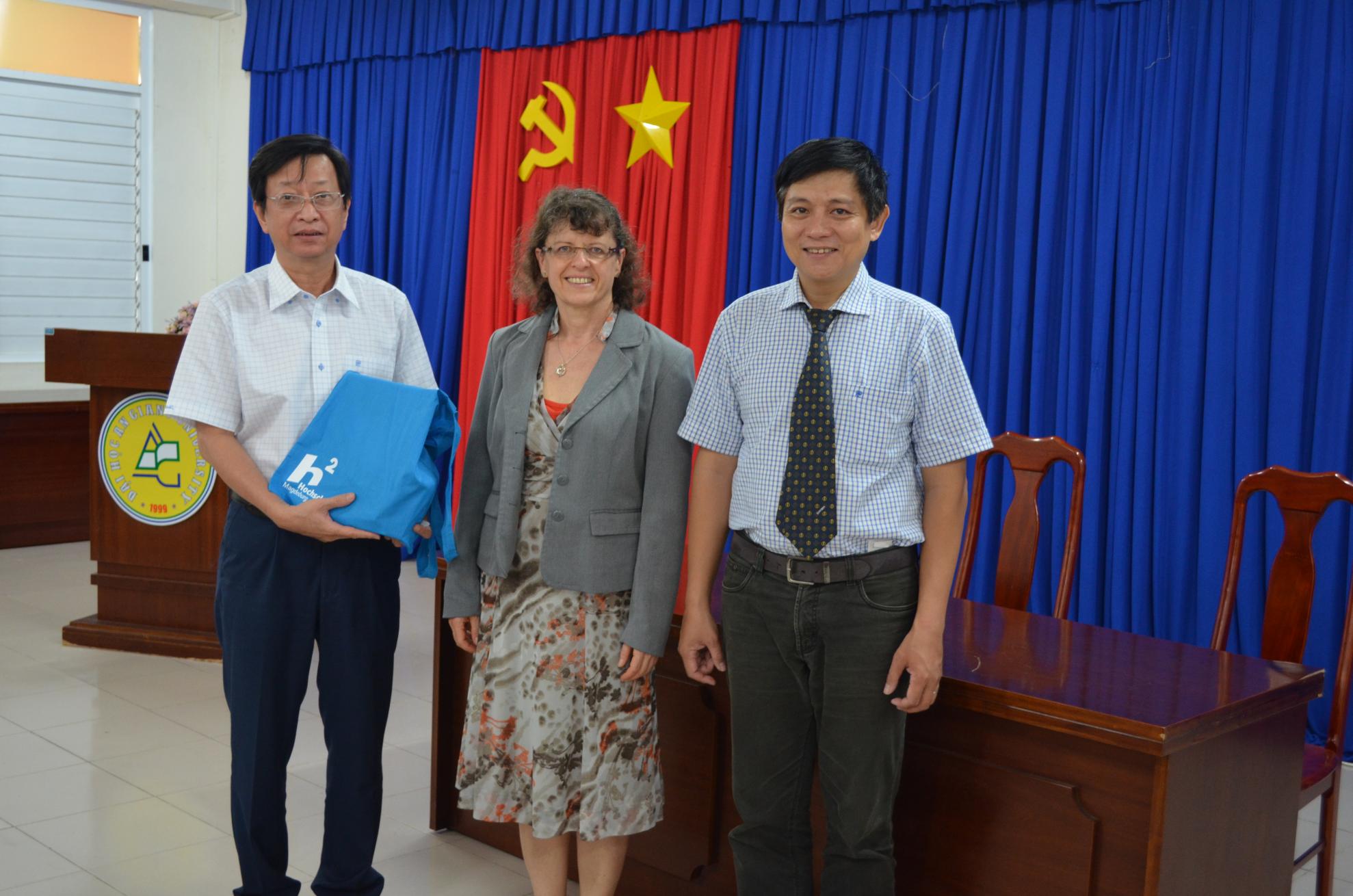2025 | A green bond between Magdeburg and Ho-Chi-Minh-Stadt

The seven-year partnership between Magdeburg-Stendal University of Applied Sciences and Industrial University Ho Chi Minh City is driving green transformation in both countries through joint research projects such as RENO-TITAN, student exchanges and innovative solutions to environmental problems.
Interview by Conrad Dorer (Magdeburg-Stendal University of Applied Sciences, Engineering Ecology Working Group) with Prof. Dr. Le Hung Anh on 9 April 2025 in Ho Chi Minh City.
I am delighted to be back at the Industrial University in Ho Chi Minh City. The partnership between the university in Magdeburg-Stendal and the university here has now been in place for almost seven years. Do you remember how this partnership came about? I believe it stems from your acquaintance with Prof. Dr. Petra Schneider ...
Yes, that’s correct. I’ve known with Petra Schneider for a long time, back when she was still working in the private sector for C&E. At the time, we had a joint project in Hanoi – that must be around 15 years ago now. After that, she moved to Magdeburg-Stendal University of Applied Sciences and took the connection with her. That eventually developed into an official partnership.
What has been achieved in this cooperation so far? What makes this partnership special?
We've truly initiated many activities together. We've very successfully run two summer schools at our University of Technology in Ho Chi Minh City. Both were funded by the DAAD, and through this we've built up a large network in Vietnam. We also have a student exchange programme, meaning several students from Magdeburg-Stendal University of Applied Sciences have completed internships or conducted research for their final theses here. And we've also applied for and carried out several joint research projects, particularly through Prof. Dr. Petra Schneider. For example, the SAND! project and RENO-TITAN.
Do you still remember how you came up with the idea to investigate the issues surrounding titanium mining, radioactive accompanying minerals, and the reuse of waste sands in more detail, and to submit a project proposal with us?
Yes, of course. This idea came about through the SAND! project in Vietnam. We have very limited resources of construction sand. On the other hand, processed sand from titanium production becomes waste. Particularly in Binh Thuan Province, a very popular tourist area. I visit there occasionally, and one of my former students works there in the Department of Environment and Resources. He told me about it and that the local government has no solution. Therefore, I discussed it with Prof. Dr. Petra Schneider and we applied for the RENO-TITAN project.
What about exchange in the other direction: from Vietnam to Germany?
I occasionally visit Germany on trips. But while German students receive DAAD funding for study abroad programmes in Vietnam, Vietnamese students lack equivalent support. For the past two years, I've at least managed to arrange summer jobs for our students in Germany. This way they can explore the country a bit and help out in agriculture.
What research topics are you and your colleagues working on at your institute – IESEM?
IESEM is the English name for our institute: 'Institute for Environmental Science, Engineering & Management'... We offer research-led, practice-oriented education programmes: Bachelor's, Master's and doctoral degrees. This means we constantly need to consider projects for our students, enabling them to research everything from smaller to very large-scale questions.
We have a Department of Environmental Engineering and a Department of Environmental Management. Both departments have different specialisations. Firstly, practice-oriented research. Here we develop so-called 'green solutions' for businesses: for example for wastewater, waste, recycling or greenhouse gas reduction. RENO-TITAN is one such example: we need to advance clean environmental technologies and circular solutions in the titanium industry. That's one specialisation.
On the other hand, we also develop models for climate change and drought, to predict flooding or optimise water resource management. Research on land use is also very important, as agriculture still dominates in Vietnam. What are the optimal, sustainable long-term solutions? In recent years we've had several projects on biochar, for instance.
Could you tell us more about biochar?
Yes, certainly. We produce biochar from several agricultural waste materials such as rice husks or coffee shells. These are common waste products - ideal for producing biochar and conducting research on the subject.
What can biochar be used for? Firstly, as fertiliser and for soil improvement. Particularly for acidic and highly saline soils. Secondly: Also for mitigating environmental impacts: absorbing heavy metals, nitrates or odours. Thirdly: With biochar we sequester carbon in the soil - which aligns well with 'carbon credit' initiatives.
However, currently biochar production isn't yet economically viable, and therefore production volumes remain limited. The process also requires significant energy input and generates carbon monoxide during pyrolysis. This demands further process optimisation.
What role does interdisciplinary collaboration play at your institute?
We consistently maintain partnerships with other institutions and departments. For instance, we have excellent working relationships with colleagues in civil engineering, biotechnology, and the chemical engineering department. We're also in regular contact with the IT group, particularly regarding AI applications.
I'd also like to briefly learn about your career path, if I may. You spent a long time in Germany and originate, I believe, from Hanoi...?
Yes, I was born in Hanoi and grew up in the Vietnamese city of Huế after the country's reunification. After school, I received a DAAD scholarship to study in Germany - this was right after reunification. I spent a year learning German in Köthen, then transferred to Humboldt University where I completed my degree in biotechnology. I also did my doctorate at Humboldt University, but in the field of agriculture. In 2004 I returned to Vietnam and worked in Hanoi until 2010. During this time, I was involved in several German projects, including the restoration of Hoàn Kiếm Lake in central Hanoi in collaboration with TU Dresden.
And since 2011 I've been here at the University of Technology in Ho Chi Minh City ...
Nearly 15 years!
Yes, nearly 15 years as Director of the Institute for Environmental Science and Management.
The work schedule is quite full because we have very many students. Our university is one of the largest in southern Vietnam with over 35,000 students. We hold lectures at weekends for our Master's and PhD candidates, and on weekdays we teach undergraduate classes.
Does that mean you work seven days a week?
Most of the time I'm here, but we have longer breaks during summer and for Vietnamese New Year when we get a month off. And I'm not here the entire weekend - usually just Sundays for the lectures.
Yes, and we make full use of the teaching period: lectures run from 6:30 am to 9:40 pm. This means that students have several blocks they can register for in order to attend lectures. But of course, our lecturers have to take on a few early or late hours.
One final question: What are your hopes for the future of the partnership between your university and our university?
I’m thoroughly pleased with our successful collaboration. We’ve delivered excellent projects together. My hope is that we’ll continue developing strong ideas for new initiatives in the coming years – particularly in sustainable production and urban planning. This is crucial for us, as our megacity is developing rapidly while facing growing quality-of-life challenges: air and water pollution, inadequate urban greening, and so forth. These are precisely the areas where we should focus our efforts to devise creative solutions!
I sincerely hope this partnership continues for many years, and I'm very much looking forward to RENO-TITAN's final results. I'll keep my fingers crossed for the pending project decisions, and hope our exchange becomes more balanced in both directions.
Thank you so much for visiting us in Vietnam.






| Voriger Beitrag | Zurück zur Übersicht | Nächster Beitrag |

